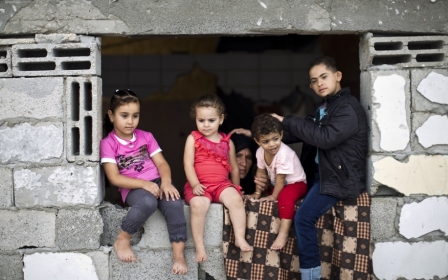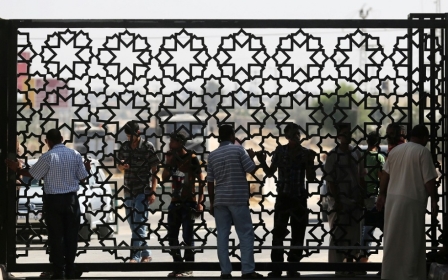UN chief: Gaza destruction 'beyond description'

The destruction in Gaza is “beyond description”, United Nations chief Ban Ki-moon said on Tuesday as he visited the strip for the first time since the 51-day summer war with Israel.
"The destruction which I have seen while coming to here is beyond description. This is a much more serious destruction than what I saw in 2009,” Ban said.
"I'd like to take this opportunity to express my deepest condolences to people who lost their lives and also to families who lost their loved ones.”
The destruction of Gaza brings “shame on the international community,” Ban added.
During his one-day visit, Ban visited Gaza City's Shejaiya neighbourhood and the nearby Jabaliya refugee camp, which experienced some of the heaviest shelling during this summer’s conflict.
Bans visit, his first since 2012, comes two days after international donors pledged $5.4 bn to help the cash-strapped Palestinians. While the Cairo conference technically exceed the $4bn reconstruction fund asked for by the PA, Palestinian Prime Minister Rami Hamdallah stressed that only half of the pledged cash would go to reconstruction, with the rest being used to cover other Palestinian budgetary needs for the next three years.
Many blamed donor "fatigue" for the shortfall in funds, with some diplomats reportedly wary of contributing large sums for reconstruction without a lasting political deal. This summer’s conflict was the third in six years and although a ceasefire was agreed on 26 August, no longer-term truce has yet been penned, with the two sides yet to agree on various contentious issues such as borders.
While Hamas and Israel were not invited to the Cairo conference, an interim deal to reconstruct Gaza was reportedly brokered by the UN, whose on-the-ground staff would inspect all construction materials and heavy machinery to ensure it was not used to help Hamas rebuild tunnels.
“The UN-brokered trilateral agreement on a temporary Gaza reconstruction mechanism has opened the door for much needed reconstruction, taking fully into account Israel’s legitimate security concerns,” Ban said, at the start of a two-day visit to the region. “I urge both sides to implement this mechanism in good faith.”
“If conditions in Gaza simply revert to where they were before this escalation, the clock will be reset for more instability, underdevelopment and conflict,” he added on Monday.
But as of Tuesday, heavy restrictions were still being placed on Gaza’s borders, despite earlier announcements that Israel would begin easing its blockade on Tuesday.
"We were notified by a private Palestinian transport company operating in Israel that the latter agreed to allow construction materials for the private sector in Gaza today," Mounir al-Ghalban of Gaza's border authority told Anadolu Agency.
"Truckloads of cement, steel and gravel would be allowed into Gaza in coordination with the United Nations," he said. "The supplies would be distributed through the private sector in line with agreed-upon mechanism.”
However, agricultural produce from Gaza was not allowed to travel to the West Bank, contradicting earlier reports that trucks, carrying produce bound for the West Bank, were allowed through for the first time since 2007.
"Trucks carrying 14 tons of agricultural produce to the West Bank were forced to return to Gaza, even though Israel had approved the crossing earlier," Tahseen al-Saqqa, director of crossings at the Palestinian Agriculture Ministry, told Anadolu Agency.
"The Israeli authorities gave no reasons for the move," he added.
On Monday, Israeli Foreign Minister Avigdor Lieberman stressed that the “border crossings are still in our hands” while Israeli President Reuven Rivlin said that Israel would only lift restrictions after the Palestinian Authority and the international community stepped in to neutralise the "terrorist" capabilities of Hamas.
Middle East Eye propose une couverture et une analyse indépendantes et incomparables du Moyen-Orient, de l’Afrique du Nord et d’autres régions du monde. Pour en savoir plus sur la reprise de ce contenu et les frais qui s’appliquent, veuillez remplir ce formulaire [en anglais]. Pour en savoir plus sur MEE, cliquez ici [en anglais].




